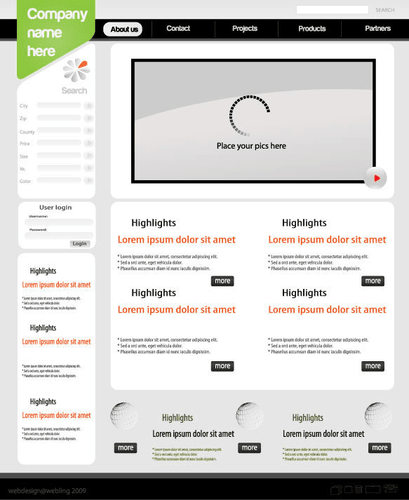Bookkeeping Statement of Stockholders’ Equity

The cash outflows spent to purchase noncurrent assets are reported as negative amounts since the payments have an unfavorable effect on the corporation’s cash balance. This is the property, plant and equipment that will be used in the business and was acquired during the accounting period. Small business owners must deal with numerous accounting reports to monitor their business’s finances and ensure its financial health.
3 Prepare an Income Statement, Statement of Owner’s Equity, and Balance Sheet
- In terms of payment and liquidation order, bondholders are ahead of preferred shareholders, who in turn are ahead of common shareholders.
- Share Capital (contributed capital) refers to amounts received by the reporting company from transactions with shareholders.
- The fourth financial statement is the statement of stockholders’ equity.
- We should note that we are oversimplifying some of the things in this example.
- The reason these are among the most liquid assets is that these assets will be turned into cash more quickly than land or buildings, for example.
A statement of shareholder equity can help you value your business and plan for the future. It can reveal if you should borrow more money to open another business location, cut costs or profit from a sale. It can also help you find and attract investors ― who will undoubtedly want to see that statement before injecting capital into your organization.
Explore Business Topics
Finally, the number of shares outstanding refers to shares that are owned only by outside investors, while shares owned by the issuing corporation are called treasury shares. Using the amounts from above, the ABC Corporation had free cash flow of $31,000 (which is the $126,000 of net cash provided from operating activities minus the capital expenditures of $95,000). If dividends are considered a required the statement of stockholders equity should be prepared cash outflow, the free cash flow would be $21,000. As you can see, the beginning equity is zero because Paul just started the company this year. Paul’s initial investment in the company, issuance of common stock, and net income at the end of the year increases his equity in the company. Every company has an equity position based on the difference between the value of its assets and its liabilities.
Bookkeeping Outline
Many of the other adjustments in the operating activities section of the SCF reflect the changes in the balances of the current assets and current liabilities. For example, if accounts receivable decreased by $5,000, the corporation must have collected more than the current period’s credit sales that were included in the income statement. Since the decrease in the balance of accounts receivable is favorable for the corporation’s cash balance, the $5,000 decrease in receivables will be a positive amount on the SCF.

Stockholders’ equity is the money that would be left if a company were to sell all of its assets and pay off all its debts. It is the net worth of a company and can also be called “owners’ equity” or “shareholders’ equity.” It can be found on a firm’s balance sheet and financial statements, along with data on assets and liabilities. In the United States, the statement of changes in equity is also called the statement of retained earnings.
What is a statement of shareholders’ equity?

Go to the section of the 10-K which presents the corporation’s financial statements and view the statement of stockholders’ equity. If you look in the balance sheet columns, we do have the new, up-to-date retained earnings, but it is spread out through two numbers. If you combine these two individual numbers ($4,665 – $100), you will have your updated retained earnings balance of $4,565, as seen on the statement of retained earnings. In the Printing Plus case, the credit side is the higher figure at $10,240.
- This statement displays how equity changes from the beginning of an accounting period to the end.
- The five column sets are the trial balance, adjustments, adjusted trial balance, income statement, and the balance sheet.
- Current liabilities are debts typically due for repayment within one year, including accounts payable and taxes payable.
- To see a more comprehensive example, we suggest an Internet search for a publicly-traded corporation’s Form 10-K.
- Statement of stockholder’s equity, often called the statement of changes in equity, is one of four general purpose financial statements and is the second financial statement prepared in the accounting cycle.
- There is no adjustment in the adjustment columns, so the Cash balance from the unadjusted balance column is transferred over to the adjusted trial balance columns at $24,800.
In reality, businesses must invest cash to prepare the store, train employees, and obtain the equipment and inventory necessary to open. In the example to follow, for instance, we use Lease payments of $24,000, which represents lease payments for the building ($20,000) and equipment ($4,000). In practice, when companies lease items, the accountants must determine, based on accounting rules, whether or not the business “owns” the item.
What does the statement of shareholder equity include?
If some journal entries must be written every month, it is helpful to assign journal entry numbers to these standard journal entries or recurring journal entries. For example, a company may designate JE33 (Journal Entry #33) to be the recurring accrual of expenses that have occurred but have not yet been recorded in Accounts Payable as of the end of a month. Perhaps the timeline/checklist will indicate that JE33 must be submitted by the accounts payable clerk six days after each month ends. The company may also have its computer automatically prepare JE34 which is the entry that automatically reverses the previous month’s accrual entry JE33. The changes that are generally reflected in the equity statement include the earned profits, dividends, inflow of equity, withdrawal of equity, net loss, and so on. You may notice that dividends are included in our 10-column worksheet balance sheet columns even though this account is not included on a balance sheet.
So, if a company had $2 million in assets and $1.2 million in liabilities, its stockholders’ equity would equal $800,000. Note that the company had several equity transactions during the year, and the retained earnings column corresponds to a statement of retained earnings. Companies may expand this presentation to include comparative data for multiple years. Under international reporting guidelines, the preceding statement is sometimes replaced by a statement of recognized income and expense that includes additional adjustments for allowed asset revaluations (“surpluses”). This format is usually supplemented by additional explanatory notes about changes in other equity accounts. Treat the income statement and balance sheet columns like a double-entry accounting system, where if you have a debit on the income statement side, you must have a credit equaling the same amount on the credit side.

Everything You Need to Know About the Statement of Shareholder Equity
It is important to note that financial statements are discussed in the order in which the statements are presented. A few more terms are important in accounting for share-related transactions. The number of shares authorized is the number of shares that the corporation is allowed to issue according to the company’s articles of incorporation. The number of shares issued refers to the number of shares issued by the corporation and can be owned by either external investors or by the corporation itself. The second section of the SCF reports 1) the cash outflows that were used to acquire noncurrent assets, and 2) the cash inflows received from the sale of noncurrent assets. Experienced financial people will review the net cash provided from operating activities.

